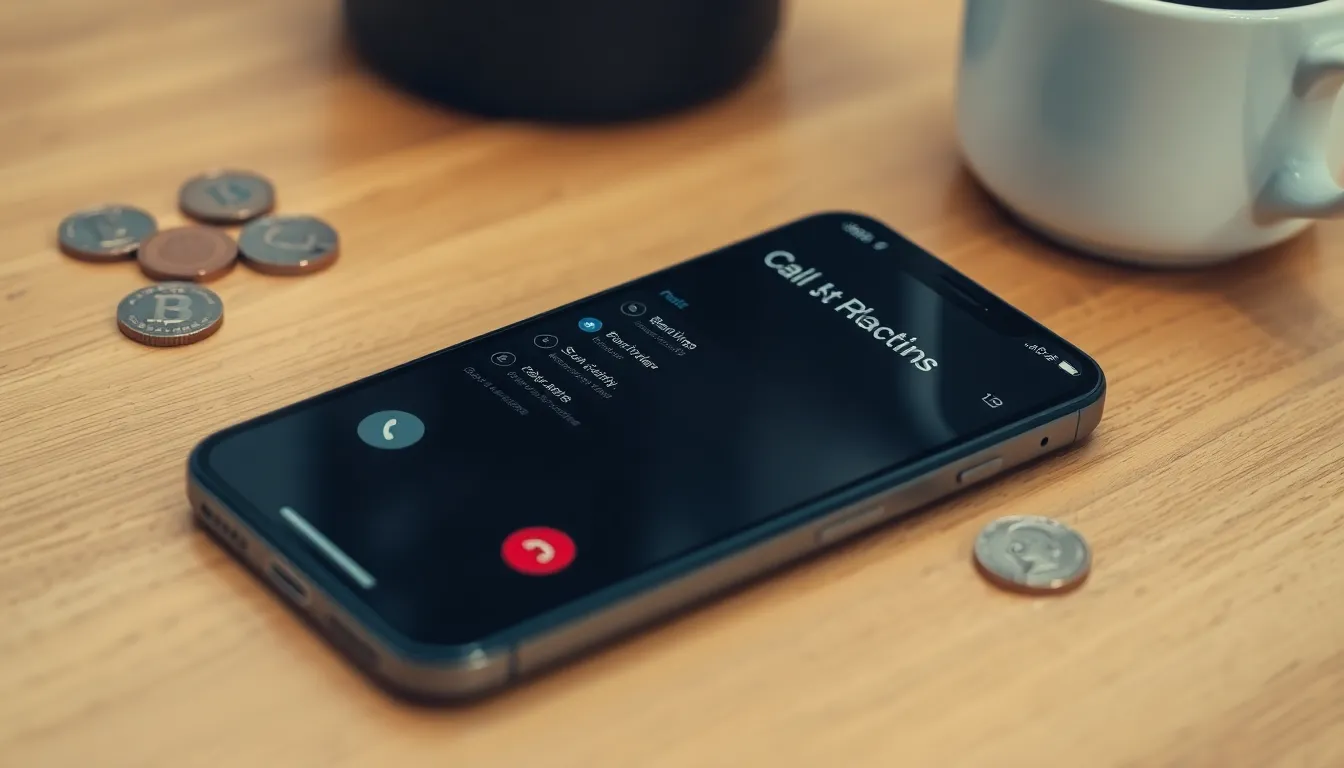Table of Contents
ToggleImagine your phone buzzing with excitement, only to find it’s another mysterious “No Caller ID” call. It’s like playing a game of phone roulette—will it be a long-lost friend or a telemarketer trying to sell you a timeshare in the Bermuda Triangle? If you’re tired of these pesky interruptions, you’re not alone.
Understanding No Caller ID Calls
No Caller ID calls often leave recipients guessing about the caller’s identity. Such calls typically come from private numbers or automated systems. Recognizing these calls can be challenging, especially when uncertainty surrounds the reason for the call.
Many individuals receive these types of calls from telemarketers, robocallers, or sometimes, acquaintances who have chosen to hide their numbers. The anonymity of No Caller ID calls contributes to the growing frustration among users. Statistics from the Federal Communications Commission indicate an increase in unwanted calls, making it crucial for users to know their options.
Blocking No Caller ID calls can significantly reduce interruptions. Various methods exist to manage these calls effectively. iPhone users can use features like “Silence Unknown Callers,” which automatically sends calls from unidentified numbers to voicemail. Another method involves utilizing third-party apps designed to block unwanted calls. Users often overlook their carrier’s call blocking options, which can provide additional support.
Recognizing patterns in these calls can help users make informed decisions. Many reports highlight that No Caller ID calls peak during certain hours, often correlating with telemarketing schedules. Staying informed about these patterns aids in understanding when typical interruptions occur.
If users encounter persistent No Caller ID calls, reviewing recent call logs assists in determining the next steps. Maintaining awareness around these calls enhances users’ overall phone experience, making daily communication smoother.
How Blocking Works on iPhone

Blocking calls on an iPhone involves utilizing built-in features and apps to manage unwanted calls. This includes options to block specific numbers and silence calls from unknown callers.
Native Features
iPhones come equipped with useful features for blocking unwanted calls. The “Silence Unknown Callers” feature automatically sends calls from unknown numbers directly to voicemail. Users can access this option through Settings, under Phone. Another option, blocking specific numbers, allows users to add unwanted callers to the block list from the recent calls list. Accessing the block option is straightforward by tapping the “i” icon beside the number and selecting “Block this Caller.” These built-in functionalities help maintain a quieter phone experience by minimizing interruptions from No Caller ID calls.
Third-Party Applications
Numerous third-party applications are available to assist with blocking unwanted calls on iPhones. Popular apps like Truecaller and Hiya provide robust call blocking features that identify and filter spam calls effectively. Users can download these apps from the App Store, then grant permission to access contacts and call logs. Many of these apps allow customization settings, letting users choose which types of calls to block. Additionally, they often include features such as caller ID and reverse number lookup. Implementing these tools can significantly reduce No Caller ID interruptions, enhancing overall phone usability.
Steps to Block No Caller ID Calls
Blocking No Caller ID calls can enhance the user experience on iPhones. Several methods exist to help manage these interruptions effectively.
Using Silence Unknown Callers
Silence Unknown Callers automatically sends calls from unknown numbers directly to voicemail. This feature prevents disturbances during busy moments. To enable it, navigate to Settings, then Phone, and select Silence Unknown Callers. Once activated, calls without stored contacts or recent call history won’t disrupt. Recipients can check voicemail later to see if important calls got missed. This option reduces annoyances while maintaining accessibility to known contacts and essential communication.
Manually Blocking Numbers
Users can manually block specific numbers associated with unwanted calls. To do this, locate a recent call from the unknown number and tap the “i” icon next to it. From there, choose Block this Caller to prevent future disruptions from that number. It’s important to note that this method does not block No Caller ID calls, which may continue to come through. Choosing to block known spam callers, however, helps minimize unwanted interruptions significantly. Adjusting blocks will enhance overall phone usability by filtering out persistent nuisances, contributing to a smoother communication experience.
Potential Limitations
Blocking No Caller ID calls on an iPhone presents certain limitations that users should consider. The effectiveness of blocking strategies varies, with built-in features like “Silence Unknown Callers” preventing unwanted calls but not entirely eliminating them. Unknown callers may still reach voicemail, and persistent telemarketers can find ways to bypass these filters. Third-party apps, while effective in filtering known spam numbers, may miss some calls due to frequent number changes by telemarketers.
Impact on important calls can concern users. Individuals relying on emergency services or businesses that use hidden numbers might find their calls going unanswered. A balance between blocking nuisances and ensuring necessary calls gets through remains crucial. Users should review their settings regularly to ensure essential contacts reach them while minimizing interruptions from unwanted calls.
Blocking No Caller ID calls on an iPhone can greatly enhance the user experience. By utilizing features like “Silence Unknown Callers” and exploring third-party apps, individuals can take control of their communication and minimize disruptions. While these methods aren’t foolproof and some calls may still get through, they offer significant relief from unwanted interruptions.
It’s essential for users to regularly review their call settings and stay informed about new options for managing calls. Striking a balance between blocking annoying calls and ensuring important ones come through will lead to a more efficient phone experience. With the right approach, users can enjoy peace of mind while staying connected.




